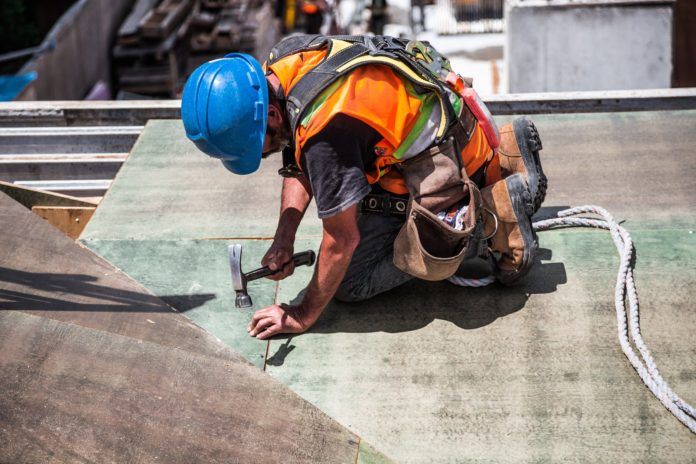Roofing is a dangerous business and treacherous conditions this time of year make an already risky job even more difficult.
With affordable housing very much in demand and wintery conditions fast approaching, we discuss how to manage a roofing project with added care and professionalism.
Secure yourself
Recent changes to government legislation mean all construction projects must now have a ‘principal contractor’, including self-builds. This means there is more of an obligation on construction companies, the self-employed and homebuilders to meet health and safety standards.
When roofing, ensure ladders and other suspension equipment are secured and on a level surface. Never attempt roof work without a roofing partner who can check your form and always perform thorough safety checks before climbing.
If you need to work through the winter, make sure to wear thermal underlayers and work boots with a suitable grip for slippery surfaces.
In adverse weather conditions all work must be risk assessed before starting. If it’s deemed safe to continue after a thorough risk assessment, take steps to stay safe, like rotating shifts to limit exposure to the cold and staying warm and hydrated throughout the day.
Also, keep an eye on weather forecasts and begin winding up any work around extreme weather conditions so you don’t get caught out.
Using your PPE
Clothing and personal protective equipment (PPE) are key when working from heights.
Always double-check lanyards and harnesses before ascending and ideally get them checked by a partner, too. Never disconnect from your lifeline until you’ve safely grounded from the roof.
No heavy equipment should be carried up and down on ladders and gloves and boots are recommended during worsening conditions to give you added grip.
Respiratory protection
Basic roofing tasks can see workers exposed to asbestos, which can cause serious breathing problems if inhaled. If you’re going to be working in areas contaminated with asbestos and silica, make sure you’ve got a fitted dust mask with the correct class (with a minimum of a p3 filter).
Goggles are a must when dealing with dust. Use them to protect your eyes from irritants which can become airborne when removing asbestos cement sheets.
Take your time
Research shows 92% of incidents are a result of workers not taking the time to do tasks properly and in some cases, rushing can even be fatal.
Not only does the construction sector have the biggest risk of lung diseases, but is also responsible for 39 fatalities each year, with the most common cause of death being ‘falling from great height’.
Rushing construction is dangerous, particularly in roofing. Don’t overlook safety tasks and if you’re short for time, prioritise important tasks and bring in additional help for repetitive or time-consuming tasks, rather than cutting corners.
This article was written by Chris Pendrey, safety, health, environment and quality manager at Actavo Direct.




